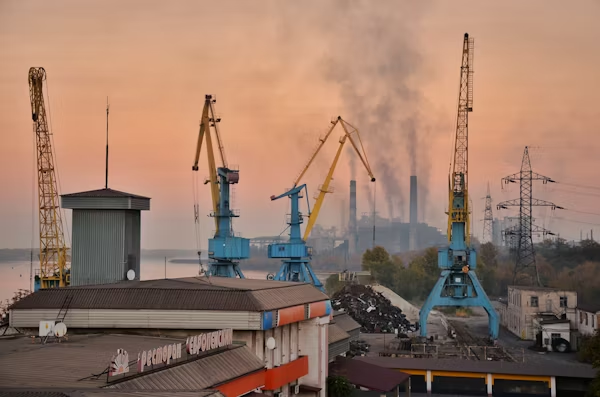Turning on the tap and enjoying a glass of water is a simple luxury. But for millions of Americans drinking tap water means exposing themselves to dangerous “forever chemicals” also known as per- and polyfluoroalkyl substances (PFAS). These pervasive substances, often found in firefighting foam and industrial pollution, have slipped into our water supplies, food chain, and bodies.
The stories of PFAS contamination are as heartbreaking as they’re widespread. From a woman battling cancer to a family afraid of their tap water, the impact is devastating.
This blog post will talk about some personal stories of Americans affected by PFAS contamination. We will understand the science behind these “forever chemicals,” the scale of the problem, and the ongoing fight for clean water.
Amara Strande’s Story
At just 15, Amara Strande, a young woman from Minnesota, had her life turned upside down when she received a diagnosis of Stage 4 fibrolamellar hepatocellular carcinoma, a sporadic and aggressive liver cancer.
“I have spent the last five years fighting cancer with every ounce of my being. And I will for the rest of my life,” Strande said while addressing state lawmakers. “Through no fault of my own, I was exposed to these toxic chemicals. And I will die of this cancer.
Amara believes her cancer was no accident as she lives near a 3M facility, a well-known PFAS chemicals manufacturer. These forever chemicals have penetrated communities across the nation, leaving devastation in their wake.
Despite her youth, Amara has to go through over 20 surgeries, including liver resections and open-chest procedures. She has faced chemotherapy, radiation, and tumors that defy all odds. However, throughout her journey, her spirit remains unbroken.
Amara has raised her voice, demanding stricter regulations on PFAS and accountability from corporations like 3M. Her story is a stark reminder of the human cost of PFAS contamination. It’s a call to action for us all to stand up, demand change, and hold corporations accountable for the damage they’ve caused.
Gary Flook’s Story
Gary Flook spent 37 years as an Air Force firefighter. He battled flames at Chanute and Grissom Air Force Bases, regularly training with aqueous film-forming foam (AFFF). This foamy, white substance was a firefighter’s tool, quickly extinguishing intense flammable liquid fires. Little did Gary know, it was dangerous for him also.
Years later, Gary was diagnosed with testicular cancer. The news was a gut punch for a man who had always put his life on the line to protect others. But as Gary went deeper into the possible causes of his cancer, he found a disturbing truth. AFFF, the very firefighting foam, contains PFAS chemicals that cause various cancers and other serious health issues.
Gary was not alone. Firefighters, both military and civilian, have higher rates of testicular cancer than most other professions. It is because of the PFAS chemicals hiding in the firefighting foam they use daily.
The military knew about the dangers of PFAS as early as the 1970s but continued to use AFFF for decades. This negligence exposed firefighters to a hidden threat, robbing them of their health and well-being. However, as awareness grows, many firefighters are left with anxiety and uncertainty about their health. This has led to a wave of legal complaints resulting in the AFFF foam cancer lawsuit.
Gary and thousands of others have joined these lawsuits against AFFF manufacturers, like 3M and DuPoint, demanding accountability and justice for the harm they’ve endured. As of June 2024, a total of 8,270 cases are in pending consolidation in AFFF MDL, as identified by TorHoerman Law.
Vickie Mullins’ Story
Vickie Mullins’ heart ached as she watched her 8-year-old grandson recoil in fear at the sight of a water faucet. What should have been a drink at a family gathering turned into a moment of panic and anxiety. Why? Because Michael knew what most kids of his age don’t: the dangers lurking in their tap water.
The Mullins family, living near the Bladen County line in North Carolina, had their lives turned upside down when their well water tested positive for PFAS chemicals. The news was shocking, especially for young Michael. He’d grown up hearing about the contaminated water, the warnings, and the bottled deliveries that replaced their tap water.
A bath became a source of anxiety for Michael. You may feel how difficult it could be for a grandmother to explain to her 8-year-old why he can’t splash and play in the water like other kids. This is the emotional toll of PFAS contamination.
Vickie’s family is one of many in the crosshairs of corporate negligence. The Chemours company, a major PFAS polluter, is under a consent order to address the contamination, but Vickie questions its effectiveness. Chemours only tests for twelve of the thousands of PFAS chemicals known to exist, leaving families like hers in a state of uncertainty and fear.
Mullins said: “The consent order also required that this company conduct a non-targeted analysis to find what we don’t know. That analysis found 257 PFAS coming out of this facility, and they’re sampling for 12. It’s ridiculous!”
While Chemours provides bottled water as a temporary solution, Vickie knows it needs to be more sustainable. The endless plastic waste and the constant worry about whether it’s genuinely safe gnaws at her. She must return to normalcy when her grandson can turn on the tap without fear.
Adam Nordell and Johanna Davis’ Story
Adam and Johanna dreamed of growing organic food on their land. They found that dream in Songbird Farm in Maine. Its rolling fields and fertile soil made it the perfect place to follow their passion for sustainable farming.
But the couple was shocked when a customer alerted them to a potential issue of PFAS contamination. The state had discovered high levels of these “forever chemicals” in deer near Fairfield. In the 1990s, many farms in Maine, including Songbird, had been fertilized with sludge water containing PFAS.
Adam and Johanna’s dreams fell apart as tests revealed that their soil, spinach, and water were contaminated with PFAS levels 400 times higher than Maine’s safety guidelines. Their dream, their livelihood, and their very health were under attack. They had to make the agonizing decision to halt all sales.
Their story is an example of a crisis unfolding in Maine. Hundreds of farms struggle with PFAS contamination, their livelihoods hanging in the balance. After years of promoting sludge use as fertilizer, the state is now scrambling to investigate and remediate the damage.
Fighting for Justice and Solutions
The fight against PFAS contamination isn’t just happening in labs and courtrooms. Every day people like Nancy Murphy also fight them on the frontlines. A resident of Merrimack, New Hampshire, Nancy’s family has been plagued by a series of health issues – cancer, thyroid problems, and high cholesterol – all potentially linked to the PFAS chemicals in their water.
Nancy Murphy said, “Can I say that PFAS definitely caused these things? I certainly can’t, but, man, there’s an awful lot of things that make me wonder.”
It’s a frustrating reality faced by many affected communities, the struggle to prove the direct link between these “forever chemicals” and specific illnesses. But fueled by a mother’s love and a community’s outrage, Nancy became an advocate for her town.
She is not alone. Across the country, grassroots organizations like the National PFAS Contamination Coalition are rallying together, demanding accountability from polluters and pushing for stronger regulations. They’re organizing town hall meetings, lobbying lawmakers, and raising awareness about the dangers of PFAS.
The fight for justice is long and arduous, often met with resistance from powerful industries. But the voices of those affected are growing louder and more persistent. They’re sharing their stories, demanding answers, and refusing to be silenced.
FAQs
What Countries Are Affected by PFAS?
Hotspots for PFAS contamination have been identified in the United States, China, Australia, and some European countries. However, these chemicals have been found in numerous countries across various continents, indicating a widespread problem requiring global attention and mitigation efforts.
Where Is PFAS Most Commonly Found?
Due to their widespread use and persistence, PFAS are found in various environments. However, the highest levels of PFAS contamination are often detected in areas surrounding chemical manufacturing facilities, military bases, and firefighting training centers.
Is stainless steel a PFAS?
No, stainless steel is not a PFAS. Stainless steel is a metal alloy primarily composed of iron, chromium, and other elements. PFAS (per- and polyfluoroalkyl substances) are a group of man-made chemicals used in various products for their water and stain-resistant properties.
At last, the stories shared here are just glimpses into the lives forever altered by PFAS contamination. The crisis is far from over, with millions more potentially at risk. While the EPA’s recent National Primary Drinking Water Regulations offer a glimmer of hope, the fight for spotless water is far from won.
We urge you to stay informed, get involved in your community, and advocate for change. Demand stricter regulations, support organizations addressing PFAS contamination, and don’t let their stories disappear.








